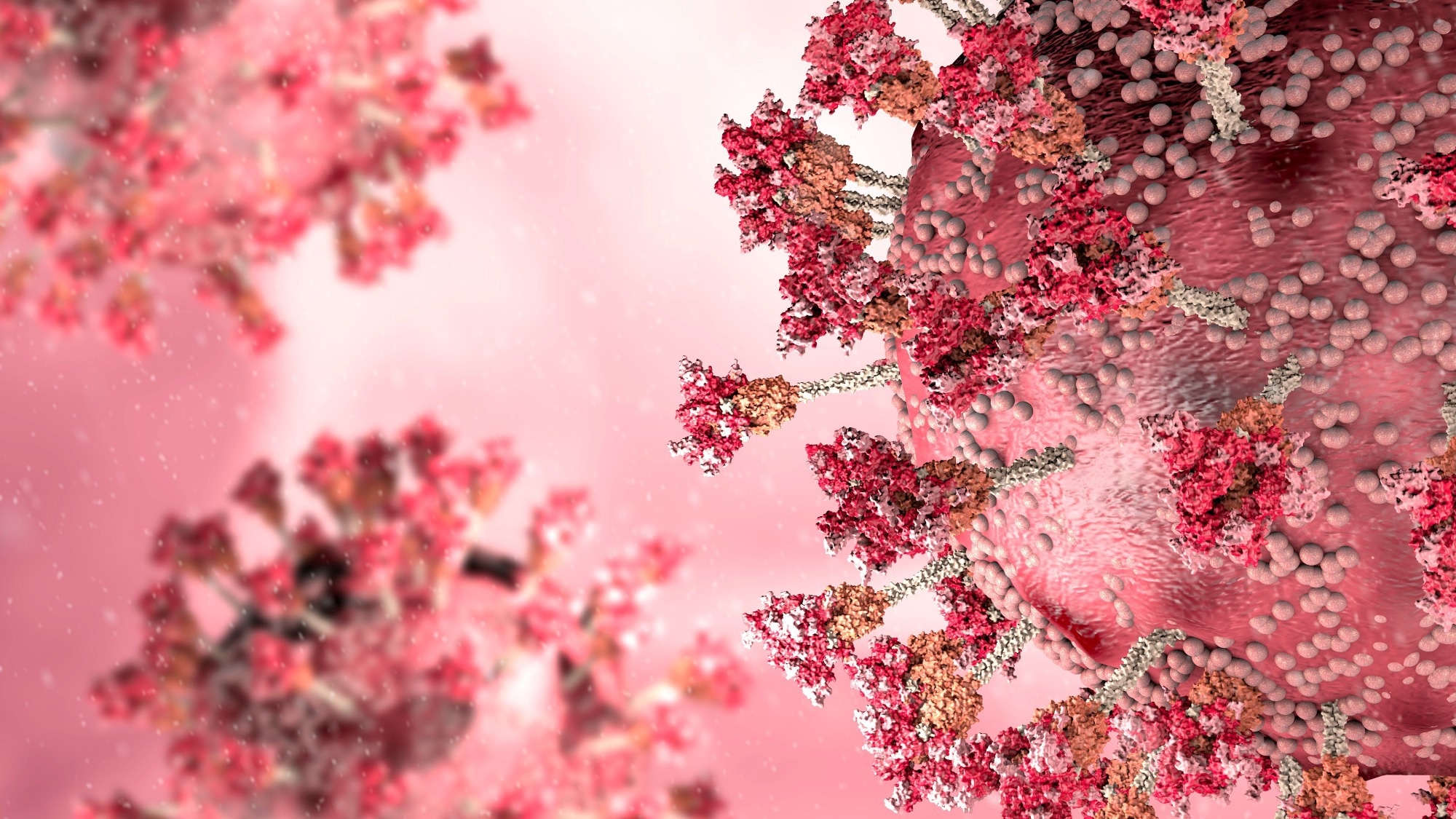SARS-CoV-2 Omicron BQ and XBB subvariants show exceptional immune evasion properties
In a recent study published in Cell, researchers demonstrated the exceptional immune evasion properties of severe acute respiratory syndrome coronavirus 2 (SARS-CoV-2) Omicron subvariants, BQ and XBB.

Background
To date, XBB and XBB.1 and BQ.1, and BQ.1.1 represent the most resistant SARS-CoV-2 variants. BQ subvariants have evolved from Omicron BA.5, whereas XBB subvariants are recombinants of Omicron BA.2-derived, BA.2.75, and BJ.1 sublineages.
Interestingly, these variants have accumulated multiple spike (S) mutations and continue to diversify and evolve. For instance, XBB has 14 S mutations more than parental strain BA.2, including five and nine in the N-terminal domain (NTD) and receptor-binding domain (RBD), respectively, while XBB.1 has an extra G252V mutation.
About the study
In the present study, researchers evaluated the neutralization of XBB, XBB.1, BQ.1, and BQ.1.1 by sera from five cohorts. The first two cohorts comprised individuals who received three doses plus a fourth booster dose of messenger ribonucleic acid (mRNA)-based COVID-19 vaccines. They referred to these two cohorts as 3 shots WT/4 shots WT. The next cohort had recipients of three doses of one of the COVID-19 mRNA vaccines, who also received a fourth booster of recently authorized bivalent mRNA vaccines (3 shots WT + bivalent). The remaining two cohorts had individuals with BA.2 and BA.4/5 breakthrough infections.
The researchers used the findings of serum neutralization tests to construct an antigenic map that showcased the antigenic distances among D614G, the wildtype SARS-CoV-2 variant, and the Omicron subvariants.
The team constructed pseudoviruses for each subvariant and every mutation found in the subvariants. Then, they evaluated those against a panel of 23 monoclonal antibodies (mAbs) targeting SARS-CoV-2 S epitopes. This panel mainly had mAbs with substantial neutralizing activity against Omicron, for instance, bebtelovimab. It also had the therapeutic mAb cocktail Evusheld, a combination of mAbs, COV2-2196, and COV2-2130.
Study findings
Relative to ancestral strain D614G, serum neutralization titers against XBB, XBB.1, and BQ.1, BQ.1.1 had diminished by >37-fold to >71-fold in the “3 shots WT” cohort. Moreover, most samples did not neutralize these new subvariants at 1:100 serum dilution. Conversely, geometric mean titers (GMTs) of sera from the two breakthrough cohorts were markedly higher. The antigenic map showed that BA.5-derivative BQ.1.1 had drifted from its parental strain as much as the latter had from D614G; eventually, it became almost six times more neutralization resistant than BA.5.
Interestingly, each unit of antigenic drift made a two-fold difference in serum neutralization susceptibility of a SARS-CoV-2 variant. Accordingly, XBB.1 was ~63-fold more resistant to neutralization than its parent strain. It is by far the most antigenically distinct Omicron subvariant too.
Both bebtelovimab and Evusheld failed to neutralize BQ.1 or BQ.1.1. Likewise, the BQ subvariants showed complete resistance to RBD class 1 and 3 mAbs, under the effects of N460K mutation, and the R346T and K444T mutations, respectively. Since BQ.1.1 had an additional R346T mutation, it more strongly evaded RBD class 3 mAbs than BQ.1. The shared S mutations among BQ.1.1, XBB, and XBB.1 suggested convergent evolution to evade antibodies attacking these S regions. Lastly, BQ and XBB subvariants S proteins have comparable binding affinities to human angiotensin-converting enzyme 2 (hACE2) as their predecessor, suggesting they mutated for better fitness. Still, there were other factors were at play as well.
Conclusions
Overall, vaccination with or without prior SARS-CoV-2 infection and even booster shots of novel bivalent (WA1-BA.5) mRNA vaccines did not confer protection against any of the four Omicron XB and BQ subvariants. Furthermore, the researchers found the extent of their antigenic drift quite alarming. The current and previous findings on the serum neutralization of some sarbecoviruses indicated that XBB and XBB.1 are much more distant than sarbecoviruses.
Together, these findings highlighted that the recently emerged Omicron BQ and XB subvariants could further compromise the efficacy of current COVID-19 vaccines, which, in turn, could surge breakthrough infection and re-infection cases. Unfortunately, since BQ and XBB sublineages are resistant to bebtelovimab, the only active mAb against circulating SARS-CoV-2 strains, clinicians have no authorized therapeutic mAb for treatment. It raises a huge concern, especially for millions of immunocompromised patients. Since they do not adequately respond to COVID-19 vaccines, there is an urgent need to develop active mAbs for clinical use.
Most importantly, the current study highlighted how challenging it would be to anticipate the SARS-CoV-2 antigenic trajectory. Nonetheless, the development of next-generation COVID-19 vaccines and mAb therapies will have to keep that into consideration to design products offering broader protection against ever-evolving SARS-CoV-2.
- Wang, Q., Iketani, S., Li, Z., Liu, L., Guo, Y., Huang, Y., Bowen, A.D., Liu, M., Wang, M., Yu, J., Valdez, R., Lauring, A.S., Sheng, Z., Wang, H.H., Gordon, A., Liu, L., Ho, D.D., (2023). Alarming antibody evasion properties of rising SARS-CoV-2 BQ and XBB subvariants. Cell. doi: https://doi.org/10.1016/j.cell.2022.12.018 https://www.cell.com/cell/fulltext/S0092-8674(22)01531-8
Posted in: Medical Science News | Medical Research News | Disease/Infection News
Tags: Angiotensin, Angiotensin-Converting Enzyme 2, Antibodies, Cell, Coronavirus, Coronavirus Disease COVID-19, covid-19, Efficacy, Enzyme, Evolution, Mutation, Omicron, Receptor, Respiratory, Ribonucleic Acid, SARS, SARS-CoV-2, Severe Acute Respiratory, Severe Acute Respiratory Syndrome, Syndrome

Written by
Neha Mathur
Neha is a digital marketing professional based in Gurugram, India. She has a Master’s degree from the University of Rajasthan with a specialization in Biotechnology in 2008. She has experience in pre-clinical research as part of her research project in The Department of Toxicology at the prestigious Central Drug Research Institute (CDRI), Lucknow, India. She also holds a certification in C++ programming.
Source: Read Full Article
